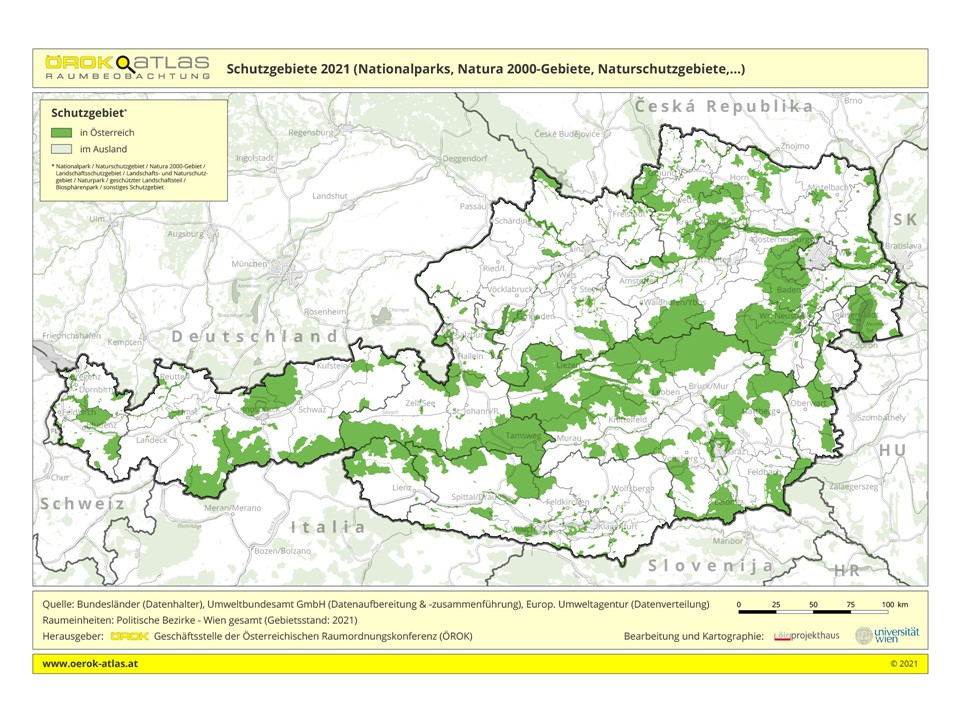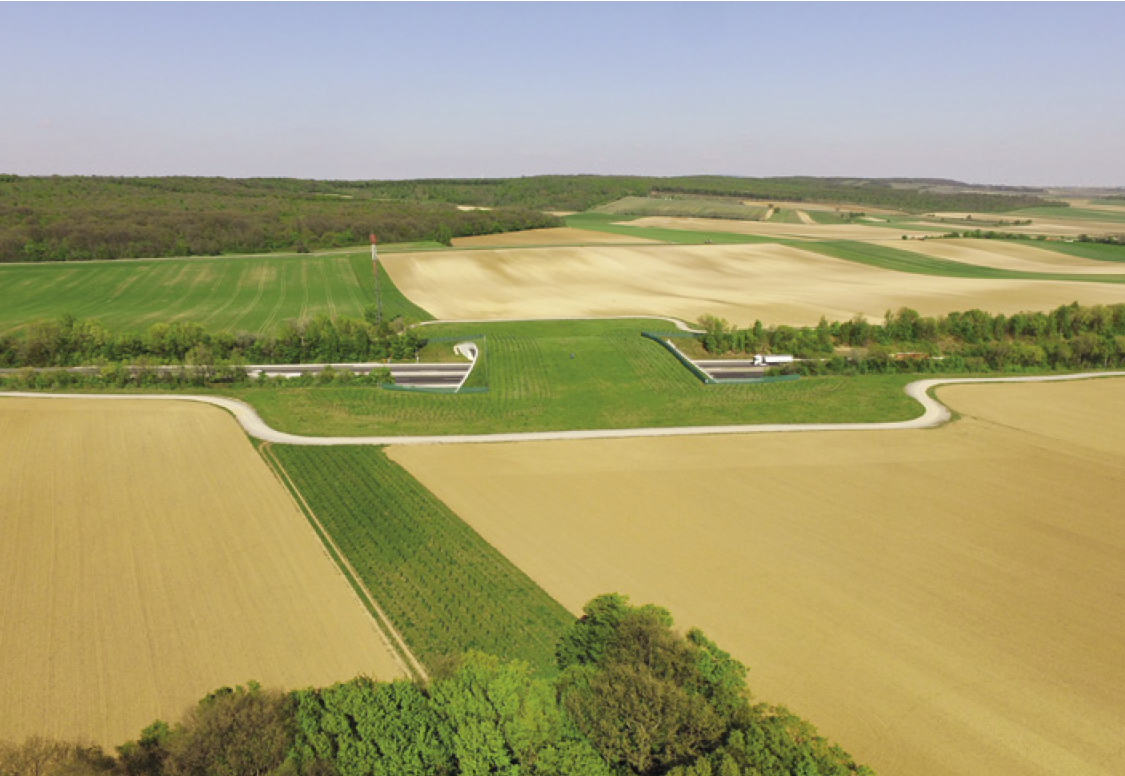SaveGREEN - When Wildlife Decides to Wander – Ecological Connectivity in Austria
22-02-2022
This article is based on a story about the SaveGREEN project that was published in the Upper Austria Hunters’ Magazine, available here.
Wildlife migration routes are not confined within national boundaries, so a trans-national approach is needed to address ecological connectivity in a comprehensive way. The SaveGREEN project takes such an approach by being active across seven countries: Austria, Bulgaria, the Czech Republic, Hungary, Romania, Slovakia, and Ukraine. Project work at the macro level contributes to an understanding of how individual corridors are linked to form an ecological network across the entire Danube-Carpathian region.
At the same time, each region poses specific problems for wildlife and their migration needs, and work is also necessary on a smaller scale to identify migration barriers and adaptation measures for each site, whether at the local, park or national level. In this article, we take a closer look at the state of ecological connectivity in Austria.
Austrian landscapes are heavily fragmented. Transport infrastructure, intensive land-use practices, highly regulated river flows, and sprawling industrial sites and human settlements are severely reducing or completely isolating natural spaces for wildlife. Construction activity in Austria claims an average of 11.5 hectares of land each and every day. The problem is particularly acute in the Alpine foothills and in basins around the cities of Graz and Klagenfurt, where intact natural areas not allocated for human use no longer exist.
Barriers and biodiversity
Habitat fragmentation and loss is a leading driver of biodiversity collapse worldwide. Forests, meadows and fields can provide all the necessities of life for plants and animals – but only if these habitats are interconnected. Interlinked habitats also allow wildlife to migrate between shelter, feeding grounds and breeding sites. Roads, dams and sprawling settlements are barriers that can isolate habitats and hinder the movement of wildlife. Habitat isolation also hampers the dispersal and genetic exchange of fauna and flora, leading in turn to reduced resilience and diversity of species.
Ecological connectivity not only benefits wild animals and plants – we humans also greatly depend on intact natural areas and an enduring ecological balance. Nature provides us with countless irreplaceable ecosystem services that underpin life as we know it, including pure and unpolluted air, clean water, functioning food-production systems, and natural products such as timber. They also ensure that nutrient and water cycles function properly, help regulate our climate, and safeguard genetic resources. Nature is also important for our mental well-being: in a time of pandemic restrictions, intact ecosystems provide us with valuable spaces for physical and mental regeneration.
 Map of Austrian Protected Areas, ÖROK
Map of Austrian Protected Areas, ÖROK
Humans as obstacles
In 2015, a research team in the Gailtaler Alps investigated the whereabouts and migratory habits 21 red deer and discovered the extent to which construction projects have encroached upon the deer’s freedom of movement. While the research area represents a large and intact habitat for red deer, in which the animals can roam largely unhindered, human activity in the valleys is a significant barrier to wildlife migration: during the entire duration of the study (details available here, German-language only), not a single monitored deer left the area (which is enclosed by settlements and transport infrastructure) or crossed into a bordering valley. The Drau and Gail rivers, as well as the A10 highway and the Gailtal and Drautal main roads, are all landscape elements that the deer refused to cross. Effective placement of ecological corridors between these intact patches of suitable habitat would, however, allow wildlife to move according to their territorial needs and prevent the isolation of individual deer.
Finding the right routes to connect habitats
The Gailtaler Alps are part of a total of 1,453 protected areas in Austria. These oases of biodiversity cover almost 30% of public land in the country, and functioning ecological corridors in these areas are needed to enable wildlife to migrate between places of shelter and feeding grounds, to find new mates, habitats and refuge, and to ensure the unimpaired functionality of ecosystems. Numerous plant and animal species have a natural habitat range that extends beyond the artificial borders of protected areas. Red deer, for instance, often move to higher alpine ground over the summer months and have an activity radius of up to 100 km2. Moreover, existing migratory routes often encroach on urban areas or pass through areas that do not enjoy any specific legal protection, making the presence of landscape hindrances more likely.

Green Bridge, photos: courtesy of Gebhard Banko, Austrian Environment Agency
Ensuring adequate protection
Ecological corridors can be protected in a variety of ways: to fulfil their full potential, they have to be kept free of construction projects, and their special status must be anchored in spatial planning. It is equally important that the agricultural and forestry sectors engage in practices that preserve corridor functionality. Proactive steps can also be taken to improve and create landscape structures that are shown to have a positive effect on ecological connectivity. Political instruments (such as a databank of valuable ecological compensation areas) also help to fulfil important ecological functions.
When large construction projects threaten the functionality of an ecosystem, mitigation measures can be implemented to reduce negative impacts on the environment. In cases where humans erect impermeable barriers – a large highway, for example – the construction of green bridges at specific crossing points can help to partially restore connectivity between bordering habitats. In such cases, close collaboration is needed between spatial and regional planners and land users – whether farmers, foresters, hunters or conservationists – for such measures to succeed.
Protected and connected
Ecological corridors are a key part of our green infrastructure. Preserving these invaluable stretches of vital natural resources for future generations is an important pillar for sustainable and ecological spatial development in Austria, the Danube-Carpathian region, and beyond. It is far easier to preserve today what we already have than to painstakingly attempt to recreate in the future what has been lost.
